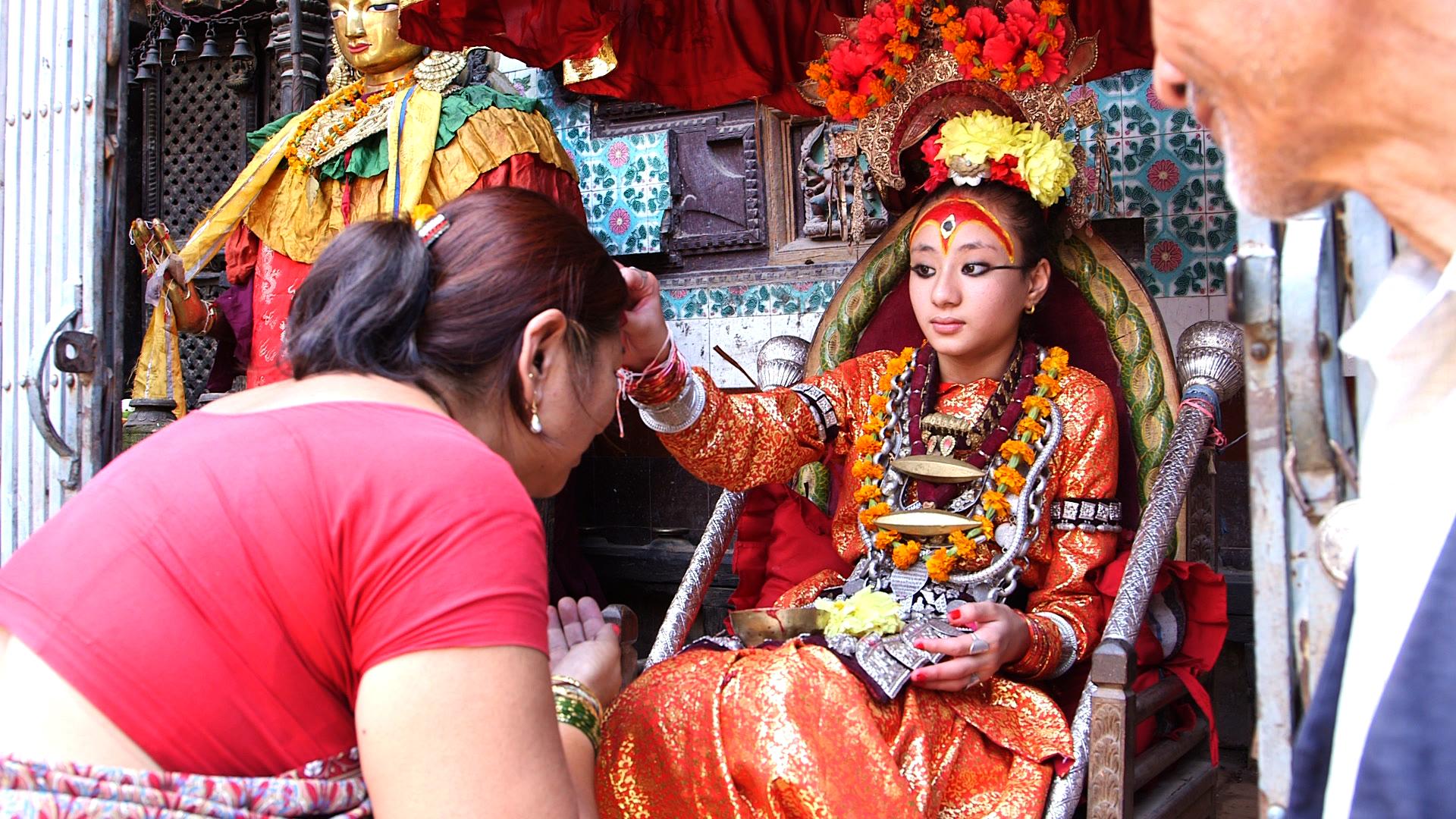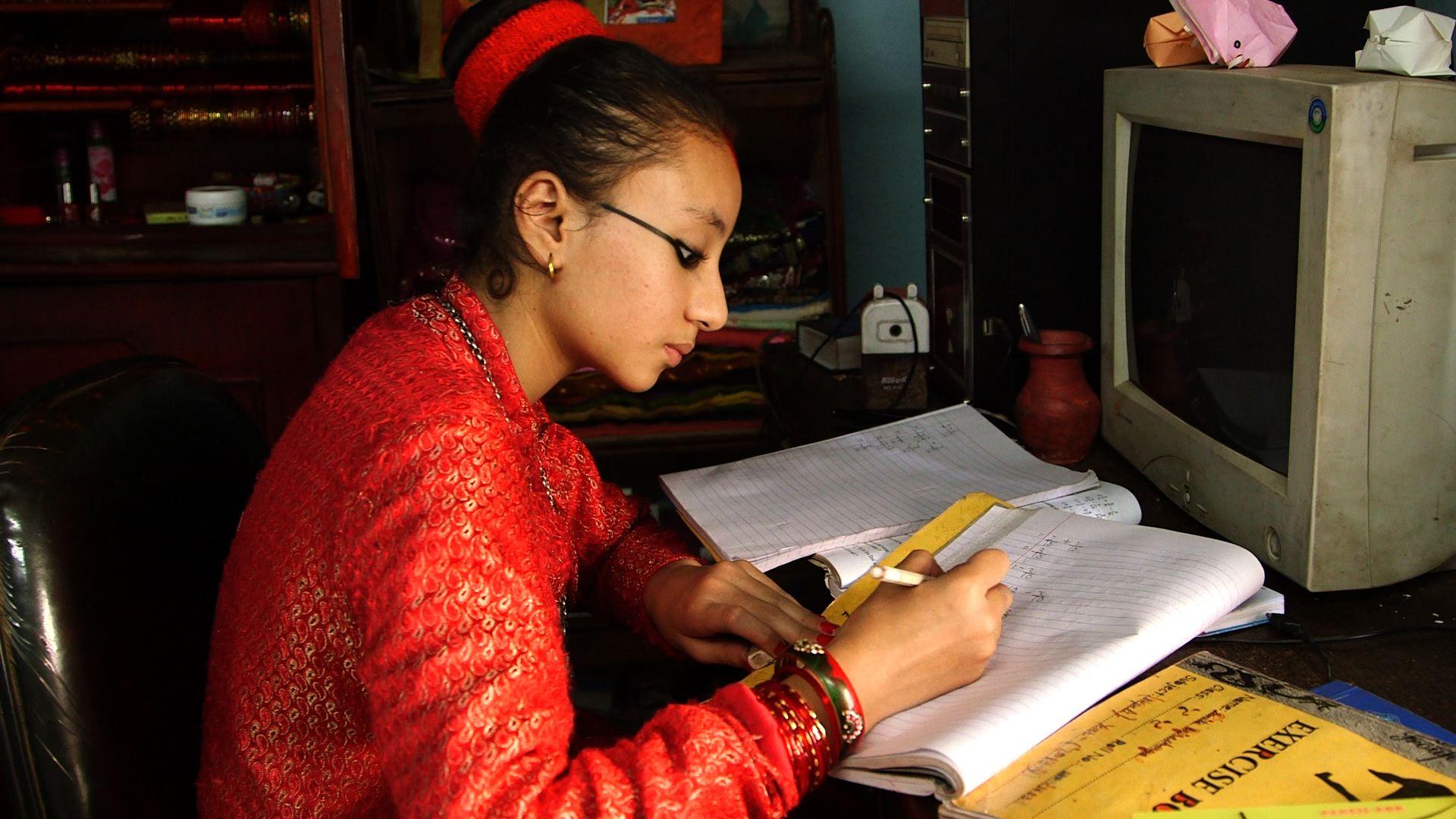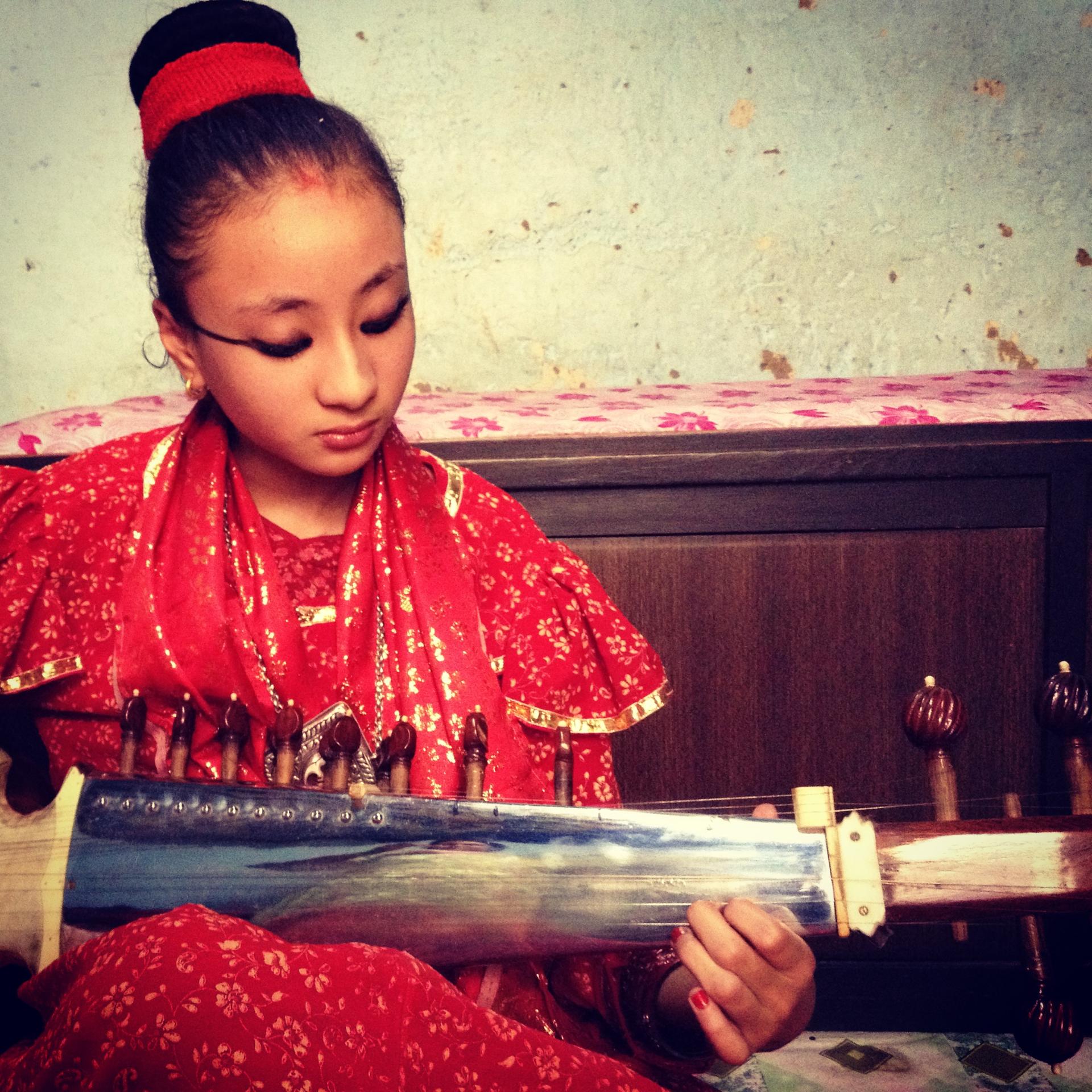A few months ago this Nepali girl was a goddess, now she’s a seventh grader
Along a busy thoroughfare near Kathmandu, a passageway leads into a large, open-air courtyard. In the back corner, there’s a modest home, with a red sign outside that simply reads, “Living Goddess.”
A narrow wooden staircase leads up to the second floor, where the goddess spends much of her childhood. She’s called a Kumari and she’s worshipped by Nepali Hindus and Buddhists, who believe she's the reincarnation of the Hindu goddess Durga.
In Nepal, this centuries-old tradition of choosing a young girl as a goddess continues to this day. Now, people from around the world flock here to get a glimpse of her.
I got to know the mother of this Kumari after several visits to her house. Her name is Shobha Bhajracharya. She has a full, round face with a sweet smile.
I ask her how she felt when her daughter Samita was chosen to be a Kumari a few years ago. She laughs shyly.
“I felt both happy and sad,” she says. “On one hand, I felt happy because when your daughter becomes god, having a god in the home is a delightful thing. But I also got scared because I wasn’t sure if we would be able to follow all the rules.”
There are many rules. For one, Shobha has to apply special makeup to her daughter’s face in intricate designs. The girl isn’t allowed to go outside except for festivals. On those occasions, her feet must not touch the ground. That means someone has to carry the 11-year-old goddess.
Another major rule: the Kumari is not permitted to speak to anyone besides her family and close friends.
A former Kumari's revelations
The only way to find out what life is like for a child goddess is to talk to a former Kumari. So I visit the Kumari’s predecessor, Chanira Bhajracharya (unrelated to Shobha.) We sit on the floor of the dark chamber where she spent a decade praying and blessing visitors.
I expect she'll speak to me in Nepali, but when I ask her a question, she starts speaking fluent English. She tells me she learned the language by reading newspapers during her Kumari days.
“When I was a goddess, I used to peek through the holes of windows,” Chanira says.
She’s now a 19-year-old business student, and looks like any ordinary teenager in her fashionable green t-shirt and black pants. She became a Kumari when she was 5.
“Being a goddess is just like being a princess and you get everything at home,” she says. “I never missed going outside, but rather enjoyed staying at home and being part of the divine life.”
Chanira’s divine life ended abruptly when she was 15, the day she first menstruated. Suddenly, she was no longer the Kumari — and she says the transition was difficult.
“When I had to step out of my house for the first time, I didn’t know how to walk properly,” she says. “My mom and dad, they used to hold my hands and teach me how to walk.”
During her Kumari years, private tutors taught her at home. All of a sudden, she started going to school with other kids.
“It was a big challenge for me,” Chanira says. “All of the classmates were so afraid to talk to me because I was an ex-goddess and I was treated a little bit differently.”
She continues, “They even used to say that I’m an alien. They said that to me.”
Believers no longer bowed down to her or touched her feet as they’d done for years.
“I lost that respect,” she says. “I never imagined that my life would be so changed in such a sudden way.”
As soon as Chanira’s tenure ended, local priests chose a new Kumari. Her successor happened to be a close friend, almost like a younger sister.
“When I was a goddess, she used to come here and we were friends, so she knows about the Kumari life,” Chanira says.
Living a "normal" life
That life full of prayer also includes doing homework. When I go back to the current Kumari’s home, her mother allows me to enter her room and watch a private tutoring session.
For the first time, I see her as a normal girl as she sits quietly at her desk and carefully takes notes.
“There wasn’t a tradition to educate the Kumaris in the past,” her teacher Rachna Upreti says. “Their world was in the four corners of their rooms.”
But things have changed for modern-day Kumaris.
“She is really interested in the outside world,” Upreti says. “Not just Nepal, but the whole world.”
The Kumari’s mother invites me to attend a special festival a few days later. I arrive as she’s carefully applying make-up to her daughter’s forehead.
She takes out ornate necklaces and armbands from a mahogany cabinet full of accessories. The Kumari grimaces as her mother fastens this heavy jewelry on her.
Soon, Shobha lifts her daughter and carries her down the steps onto a throne at the center of the courtyard.
Hundreds of people have lined up to offer the Kumari flowers and donations, and to touch her feet. They begin inching toward her to receive her blessing and she applies a bright red dot to each visitor’s forehead. Later, she sits completely still, even her eyes dart left and right, as onlookers photograph her.

As she plays the stringed instrument, she looks completely relaxed. She seems to forget about the pressures of being a living goddess, at least for a while.
Retiring from goddess life
A few months after I visited the Kumari, I learned that her term as a living goddess had ended and a new girl was selected.
“From the very first day she had her period, she was locked in a dark room where no sunlight could enter,” Chanira wrote to me. “No men were allowed. But she could have plenty of female friends and relatives.”
Chanira stayed with her friend Samita in those days to help her adjust to a new life. On the twelfth day, no longer a goddess, Samita could finally walk outside her home.
She’s now in seventh grade and is making new friends at school.
“I think she is happier nowadays, as she is free to go outside,” Chanira says.
Produced with support from the International Center for Journalists (ICFJ).